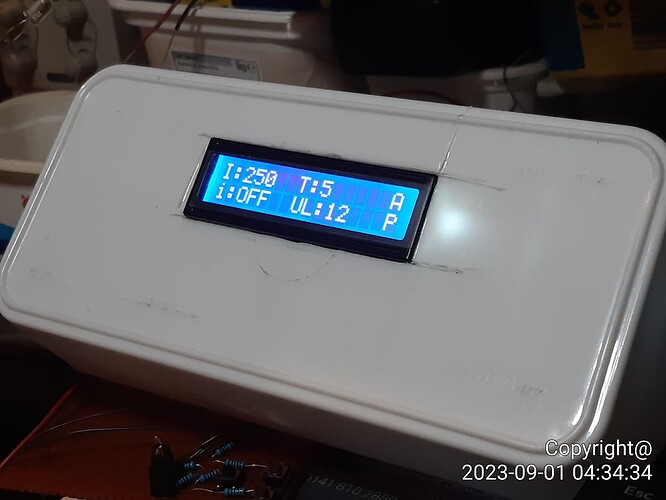Jamie;
>I was reading http://www.susans.org/reference/electro/electrol.html
she was saying that over Cataphoresis can harden the skin
how do you know if your over doing it.
Yes, Cataphoresis can harden skin, The point is to not overdo it. Cataphoresis should not hurt, and many find it comforting. Its purpose is to reverse the process used to make the lye. It also helps contract the blood vessels helping to reduce the redness of the skin. I use a moisturizing cream from Dectro that is designed for Cataphoresis called yi zi Balm, but not sure of the spelling. It does help and has an antibiotic ingredient as well. Cataphoresis helps to push this cream into the skin cells where it can best perform it job.
So can I do Anaphoresis before hand ? I saw one of your earlier post
Anaphoresis, can be performed, but many find it very irritating. It will cause redness and enlarges the blood vessels, but can make it easier to insert the probes as well. You can try it if you like.
> Quote:
>http://www.hairtell.com/ubbthreads/showf…=true#Post37865
Anaphoresis uses the same negative lead as the probes does, but the currents range from generally .6ma to 2.0ma
>Also thought I saw a post but cant find it something about putting a wet paper towel on the skin
The wet paper towel trick was used at the Electrology school that I went to. I believe the reasoning was because the roller had plastic handles and could therefore not be place in the sterilizer. So by placing a wet paper towel between the patron and the roller, skin contact was not made and sterilization was not necessary. The wet paper towel was just a means of providing continuity for the current while not placing the roller directly on the skin. I have several different attachments to my professional cataphoresis probe and only one of which is a roller, others are different shapes for different areas of the skin like balls for eyelashes etc. For home use, just a spoon should work well and is very cheap.
>While I’m gathering the supplies to build, I’ve been practicing with a One Touch its been about 48 hours I do have some red marks supposedly the norm hope not burn marks a little worried because I have a tawny complexion
so the most minor red marks like from a zit often leads to hyper-pigmentation .
I have not used or even seen the One Touch, so I cannot offer much on its operation. I believe I read somewhere that you push a button to operate the one touch. Current should not be on when inserting or removing the probe from the follicle. Only when it is fully inserted should it be activated.
>Thing’s I’m was wondering
>Now I know this probably why people have done the modification by adding the sponge so they don’t come to close the anode before hand but just encase is of any concern.
The purpose of the sponge is to provide good electrical connection to the body. Salted water is a very good conductor. I add some table salt to tap water for my sponges for just that reason.
>3.My leg skin omits Lye about 5 sec after inserting the probe at the lowest setting
Mind you I have not used Galvanic all that much, having concentrated on Flash, Thermolysis and Blend. But I have experimented with it a little and I get to where I see an effect at about 5 seconds time as well.
>a. Am I making a mistake is the needle to hot to shallow for am I burning myself by doing the recommended 15 sec
First off, the probes does not get hot. Maybe you are referring to too much current. I would work first on areas that are not visible to others and see how the skin reacts.
Multigalvanic machines are regulated to just 0.2ma but allow 2-3 minutes per hair. 15 seconds seems extremely fast to me. For Galvanic many actually leave the probe in for several seconds after removing the hair, just to make sure they produced enough lye.
>b. Should I still proceed the 15 sec or remove the stylist right away … Has anyone else had this
happens or do i just go by when the hair slides out.
Again, make sure unit is off before removing probe. Yes the hair should slide out easily, as if you have to tweeze the hair to remove it, that is all you have done.
- Dose water tension in the legs factor which I have (haven’t tried other parts of the body)
- Can I use cocobutter or vitamin E right after or should I make tend-skin which is better
to prevent scaring
I am afraid I do not have experience with those items. Witch Hazel is another after care item that has been used, but I prefer my moisturizer that I mentioned above.
Martha Montgomery
Puget Sound Electrology
